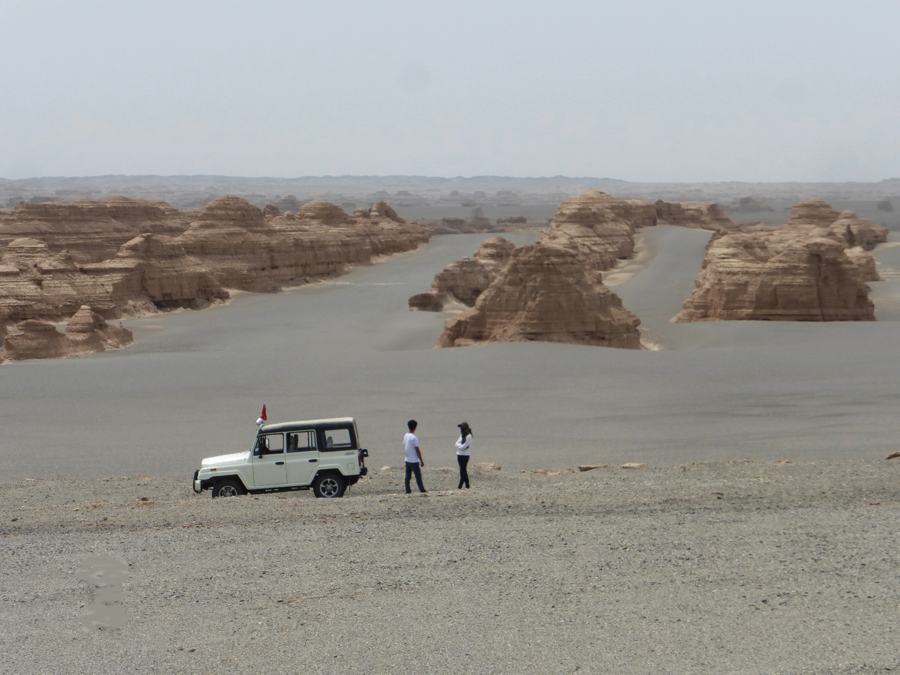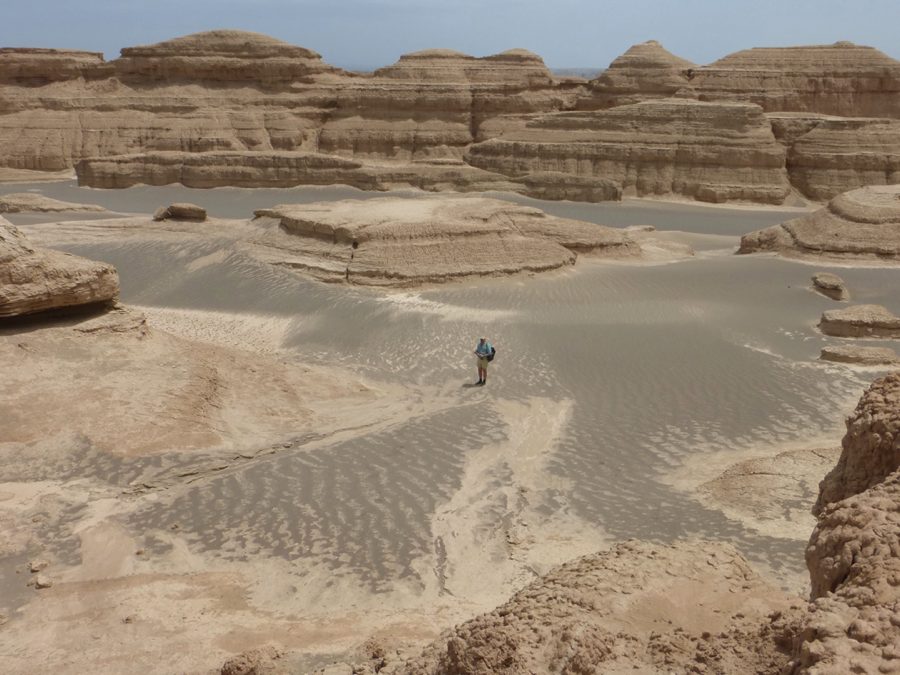Jani Radebaugh is a planetary scientist and an Associate Professor at Brigham Young University. Her research focuses primarily on three planetary satellites: Saturn’s moon Titan, Jupiter’s moon Io, and our own Moon. In conjunction with her extraterrestrial work, she uses terrestrial analogues to help us better understand other planetary processes. She visited western China in July 2014.
It turns out that the study of wind, and the landforms caused by wind, can take you to the far-flung places of the world. I had the privilege to attend the International Conference of Aeolian Research (ICAR) in Lanzhou, China, a city approaching the northern/central edge of the country. Though I came to realize that even “small” cities in the densely populated country of China are fairly large by western standards. The meeting, with over 300 attendees, nearly half of them Chinese, was held at Lanzhou University, where we could interact with students and faculty from there and see aspects of campus life in another country. One of the most puzzling pictures I took was of dozens of large hot water containers near the student commons waiting to be filled by a clean, hot water dispenser, I could only imagine. The meeting had attendees from the four corners of the Earth – Australia, France, the UK, the US, South America, Africa and China – all presenting their latest research on wind erosion, sand dunes and desert dust. The collaborations I struck and research plans I made were so valuable.
 |
| Dune researchers of the world ascend the mighty megadunes of the Badain Jaran desert. |
The conference organizers bravely endeavored to hold a field trip with all 300 attendees, in six full-sized buses, on a one-day drive north to the Badain Jaran desert. This dramatic locale is in the northern Chinese province of Inner Mongolia, beyond the northern reaches of the Himalayan thrust belt. After emerging from long tunnels that were feats of engineering, I could tell we were finally in the vast Gobi desert of the north. Our destination was a set of giant mega-dunes, a series of overlapping, regularly spaced mountains of sand interspersed, perhaps puzzlingly, with broad, shallow lakes. That sand dunes can coexist with lakes indicates the engine of sand creation and movement is strong and unstoppable. We discussed origins of sand and dune creation, and then many of us marched to the top of a 300 meter high dune, at the rate of one step forward, a half a step back, in the soft sand. From the top, I could see that these dunes were stars, with complex overlapping arms, though they were elongated into ridge-like forms. Gravity data shows a high under each of these – is it bedrock? Ultracompact sand? Sand and fluids? For many people, including top dune researchers from the UK, this was their first desert, and first dune climb. Having been spoiled by the spectacular deserts of the US southwest, I was still dazzled by the sheer size of these behemoth dunes.
 |
| Author at the summit of a Badain Jaran megadune. |
Prior to my urban Chinese and Inner Mongolian experiences, I traveled past the oldest section of the Great Wall and through the Jade Gate of Chinese Silk Road history, to the far west of China near the Taklamikan Desert. The name of this desert could have many origins, but one is thought to be roughly “you better go around or you’re not coming out”, which was the story for many merchant caravans. I traveled there with a colleague to study some of the most beautiful and transient features in all of geology – wind-carved pinnacles called yardangs. There are so few of these worldwide because the towering and delicate formations, carved by wind into soft sediments, continue to be pulled down by relentless winds. They are important to study because they hold clues to understanding the strength, variability and patterns of wind over landscapes. We journeyed into the center of the yardang field, studying the shapes of the giant towers, made of light-colored, delicate lakebed clays, that appear to be plowing through dark, grey limestone gravels on the floor like ships through waves. The towers are organized into vast lines marching across the surface, some taller and more continuous than others, all undergoing severe badlands erosion and all about the same distance apart. A burnished sky informed us of the dustiness that accompanies the giant deserts of Earth.
Many secrets of the megadunes and yardangs of China have yet to be revealed. I await the time I can return to dissect the mysteries of these unique landscapes.
 |
| Yardangs, several kilometers long, tens of meters high, of the west China desert. A hazy sky and grey gravels contrast with the light, lakebed clays of the yardangs. |
 |
| My colleague Ralph Lorenz in the inter-yardangs. |
![]() This work is licensed under a Creative Commons Attribution-NonCommercial-ShareAlike 4.0 International License.
This work is licensed under a Creative Commons Attribution-NonCommercial-ShareAlike 4.0 International License.

